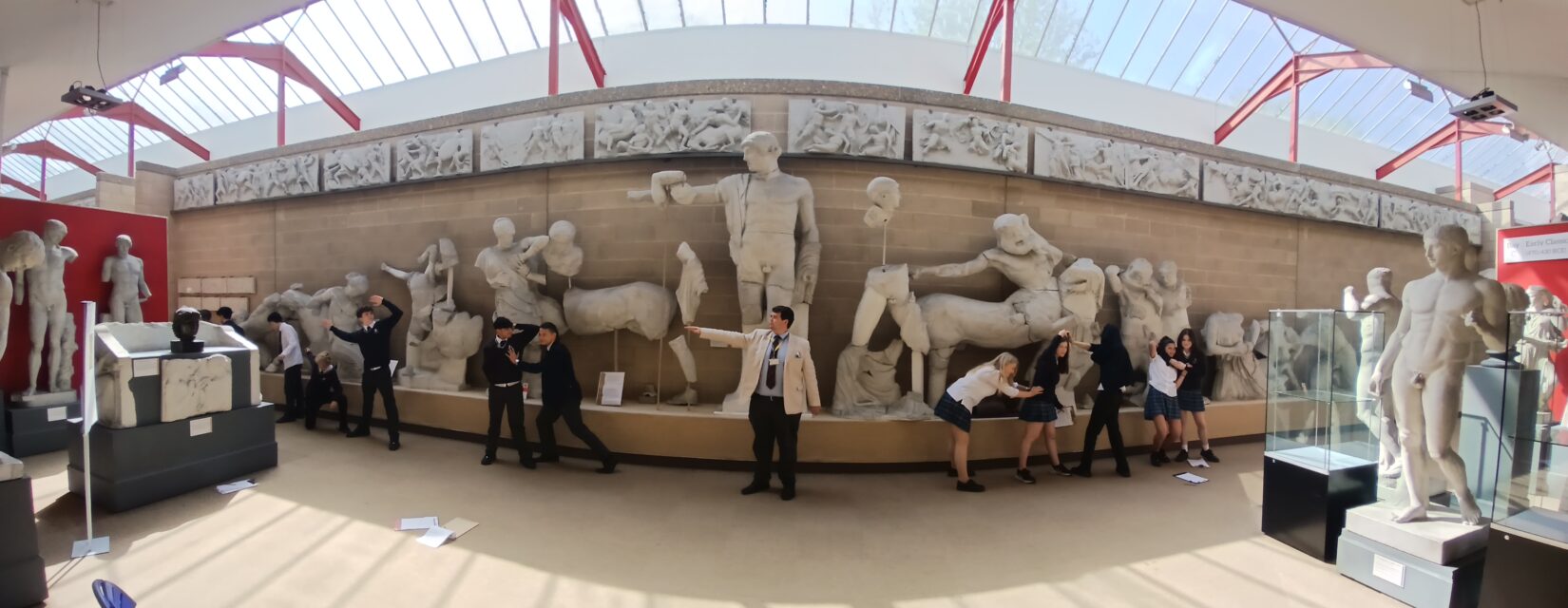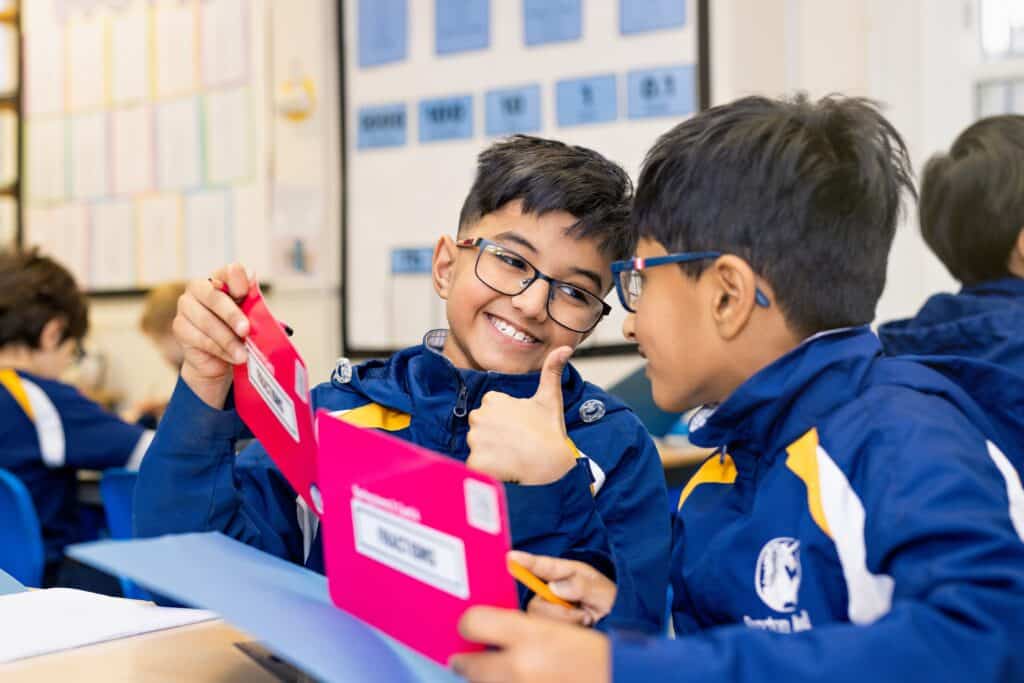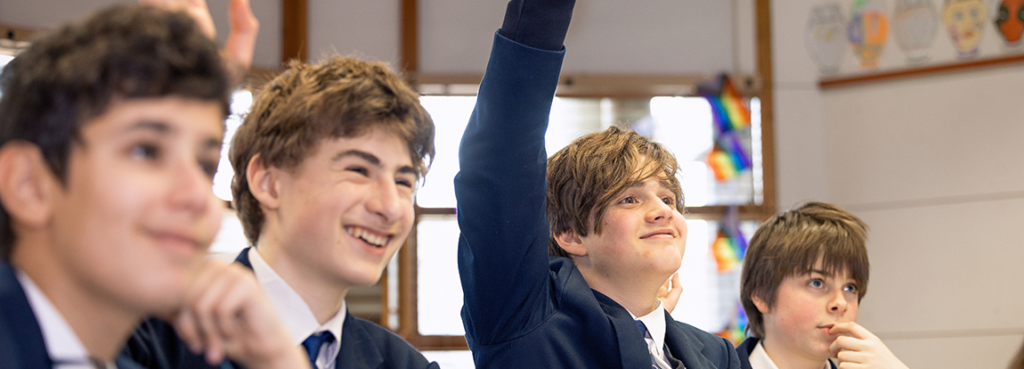This term, our Y10 Classical Civilization students had the opportunity to visit the Cast Gallery at the Museum of Classical Archaeology in Cambridge—a hidden gem tucked away within the Faculty of Classics at the University of Cambridge. The gallery is home to one of the largest collections of plaster casts of ancient Greek and Roman sculpture in the world, and it provided an inspiring setting for our exploration of classical art and history.
Will F-D (Y10) shared his experience of the trip:
Classics Trip
Our Classical Civilization trip to the Cast Museum in Cambridge was a great trip. Surrounded by incredible replicas of ancient Greek and Roman statues, we had the chance to really immerse ourselves in the world we’ve been studying. One of the highlights was when all of us attempted (not very well) to re-create some of the statues—it was hilarious and loads of fun, and some of our poses were actually quite good! We went with our teachers, Mr Barry and Mr Batty, who made the day even more enjoyable with their knowledge (and surprisingly good statue impressions). It was a brilliant way to bring the subject to life outside the classroom.
The Museum of Classical Archaeology houses over 450 plaster casts of ancient sculptures, including famous works such as the Laocoön Group, the Farnese Hercules, and the Parthenon Marbles. These full-scale replicas provide an invaluable resource for students and researchers alike, offering the chance to study some of the most iconic works of antiquity up close, even though the originals are spread across museums throughout Europe.
One particularly engaging part of the gallery is its unique layout: the casts are displayed along a single, narrow corridor, creating a dramatic and immersive experience as visitors move through the space surrounded by gods, heroes, and historical figures.
The visit was not only a chance to see these masterpieces in person, but also an opportunity to connect classroom learning with real-world examples of ancient craftsmanship, mythology, and cultural expression. Students were able to observe details in the sculptures that are often missed in photographs, from the intricate folds of drapery to the emotion conveyed in facial expressions.
We’re incredibly grateful to Mr Barry and Mr Batty for organising such a memorable and enriching day, and to the museum staff for welcoming us into such a fascinating and educational space. The trip was a perfect example of how classical studies can come alive through first hand experiences, leaving everyone inspired and more deeply connected to the ancient world.






